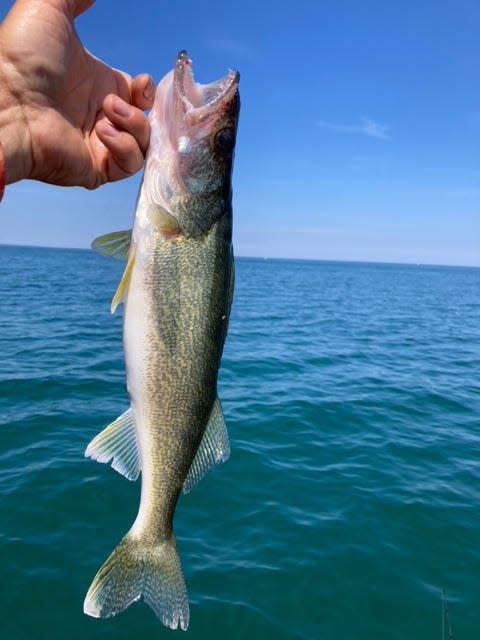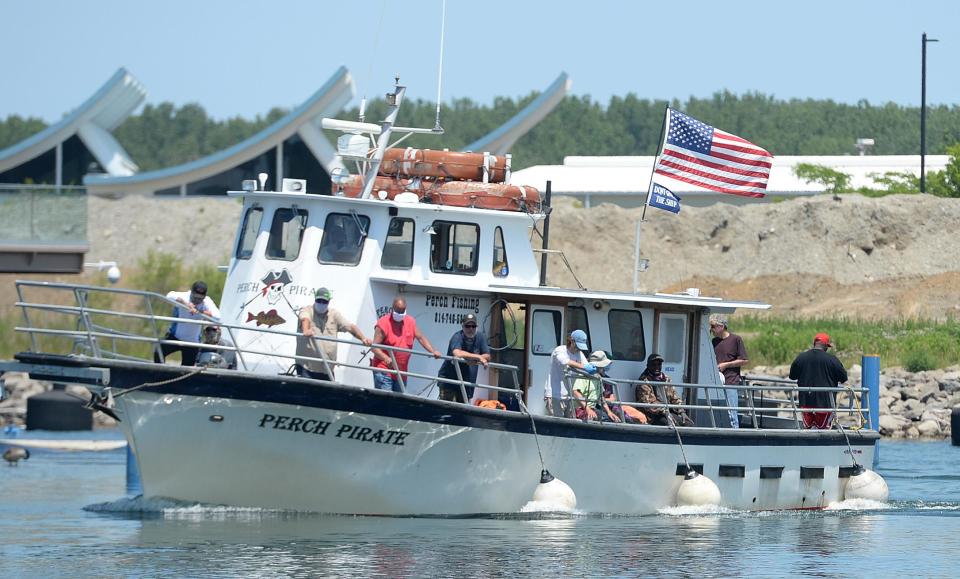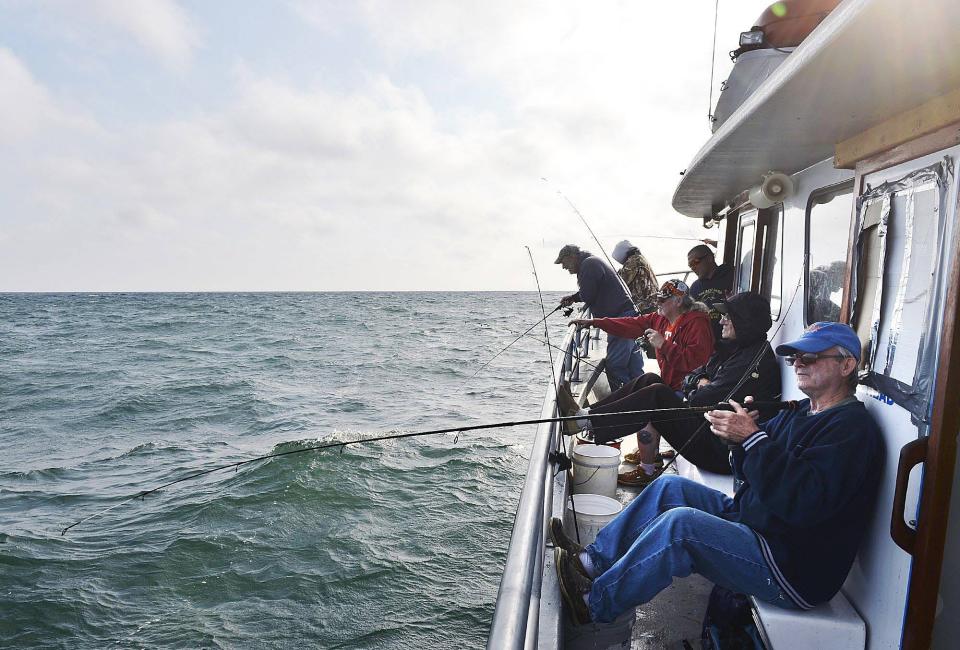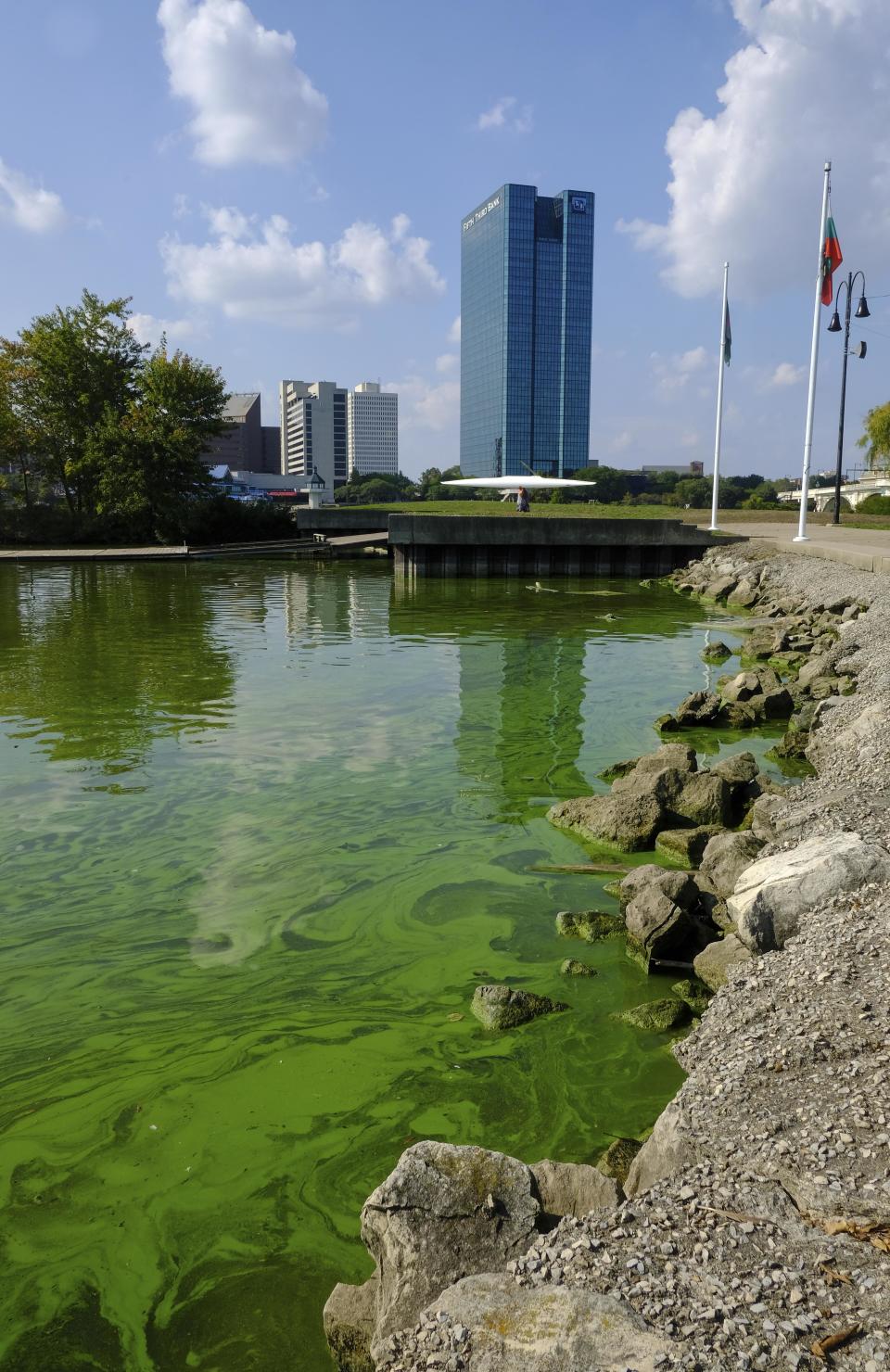Guest columnist: Why don't we restore commercial fishing in Erie?
There are two kinds of jobs, those that "create wealth" by bringing money into the region from outside the region and those jobs that "circulate wealth" within the region. Fish we take from the lake, crops that we grow, minerals that we extract from the ground, products that we manufacture, retirees we convince to live here, services provided to outside individuals and organizations, and tourists who we attract — all create wealth for the region. Each wealth-creation job typically supports about three wealth-circulating job in the region. We'll focus here on one potential source for wealth-creating jobs.
Fishing industry plans
In 1890, Erie was the largest, in tonnage, freshwater fishing port in the entire world. Today, my understanding is that Erie is down to one commercial fisherman and the Canadian Great Lakes fishing industry is now about a $1 billion industry. What happened?
More: Erie's commercial fisherman prepares to open a new market near Presque Isle
Back in the times of these huge catches, gill nets were being used which were efficient in catching targeted species such as perch, walleye or white fish. But they also killed off large numbers of nontargeted species caught in the same net. When catches began to decline, the states bordering the Great Lakes entered into a treaty with the Canadian government and provinces. The U.S. states agreed to limit their fisheries to the use of nets that were not nearly as efficient but did not kill off large numbers of nontargeted species. Further, the states agreed to only net certain species. It was not only the Canadians who pushed for these actions. The U.S. sportfishing lobby was also pushing for the species-specific netting systems.
Possibly because their sportfishing lobby was not as strong, under the treaty the Canadians were permitted to continue the use of the gill nets and multispecies fishing. As one might expect, the Canadians have taken over the Great Lakes fishing industry. The ultimate irony is that the U.S. states along the Great Lakes still operate chains of fish nurseries that routinely release fish into streams emptying into the Great Lakes, where they grow up, swim across the lakes, get caught in the Canadian nets, are processed and sold to American and other markets.
More from William R. Miller: How can we improve Erie transit? Link air, rail and bus, try seasonal flights, seaplanes

Under my proposed plan, Pennsylvania would withdraw from the current treaty and set up a new set of regulations to permit Erie-area commercial fishing to rebound. Newer netting techniques will allow this to be implemented without some of the collateral damage to nontargeted species. The range of targeted species could also be expanded.
Time to restore Lake Erie sturgeon
In the late 1800s, 4 million pounds of sturgeon were taken out of Lake Erie yearly. Overfishing, invasive species and damming of spawning streams and rivers have largely eliminated the sturgeon from Lake Erie. In some parts of the country, sturgeons are now being raised successfully in fish farms. It is suggested that an enclosed, tour-accessible sturgeon demonstration fish farm be built adjacent to or as part of a proposed aquarium, next to the Maritime Museum. I will address this later in a column about my tourism plan.
More: What a stack of old letters reveals about fishing in Erie more than a century ago

In the wild, it takes over 20 years for the female sturgeon to begin to produce eggs (caviar) but it appears that genetic engineering might shorten the delay. Caviar is normally expensive since it takes 20 years until the eggs are harvested and the female sturgeon traditionally perished in the extraction. Techniques have recently been invented that lets the eggs be removed each year without sacrificing the female — a sort of a Caesarean procedure.

Force the cleanup of Maumee River runoff to stop algae blooms
The most serious threat to Lake Erie fishing are the algae blooms spreading relentlessly eastward from western Lake Erie. These blooms are triggered by fertilizer, farm waste, pesticides and other pollutants' runoff. By some estimates, almost half of this runoff is coming down the Maumee River which drains the largest, and most densely farmed, watershed on the entire Great Lakes area. This 4,000-mile-long system drains over 8,000 square miles of Ohio and parts of Indiana and Michigan — an area the size of the entire state of New Jersey.) The annual runoff is 400 billion gallons a year.

Because of the way their watersheds are oriented, Ontario, Pennsylvania and New York, who share Lake Erie with Ohio, contribute little to the runoff problem in the lake. If it were possible, it would seem like these three political entities could file suit against Ohio, Indiana and Michigan to stop the uncontrolled release of all this pollution. And there is precedent for this. When the Chicago Ship and Sanitary Canal was built to flush waste from Chicago and polluted, partially stagnant, southern Lake Michigan waters down the Illinois River into the Mississippi, the city of St. Louis sued. They forced the construction of one of the largest, wastewater treatment plants in the nation to clean the effluent. However, realistically, the job of cleaning up this Maumee River is going to be major, beyond the resources of the adjoining states and provinces. Making the outflow of the Maumee clean could be one of the largest civil engineering projects in U.S. history. If the U.S. is looking for a job creator of the scale of the 1930s TVA program, this could be it.
William R. Miller is the former vice president of research and development at AMSCO. He formerly co-chaired the Erie 2000 study for the Erie Conference in 1984 and has been updating and expanding that study in recent years. He has also served as a volunteer docent at the Erie Maritime Museum, published a book on the Battle of Lake Erie and written a pamphlet for the museum on the Erie Extension Canal.
This article originally appeared on Erie Times-News: Guest column: Here are the ways Erie could restore commercial fishing

